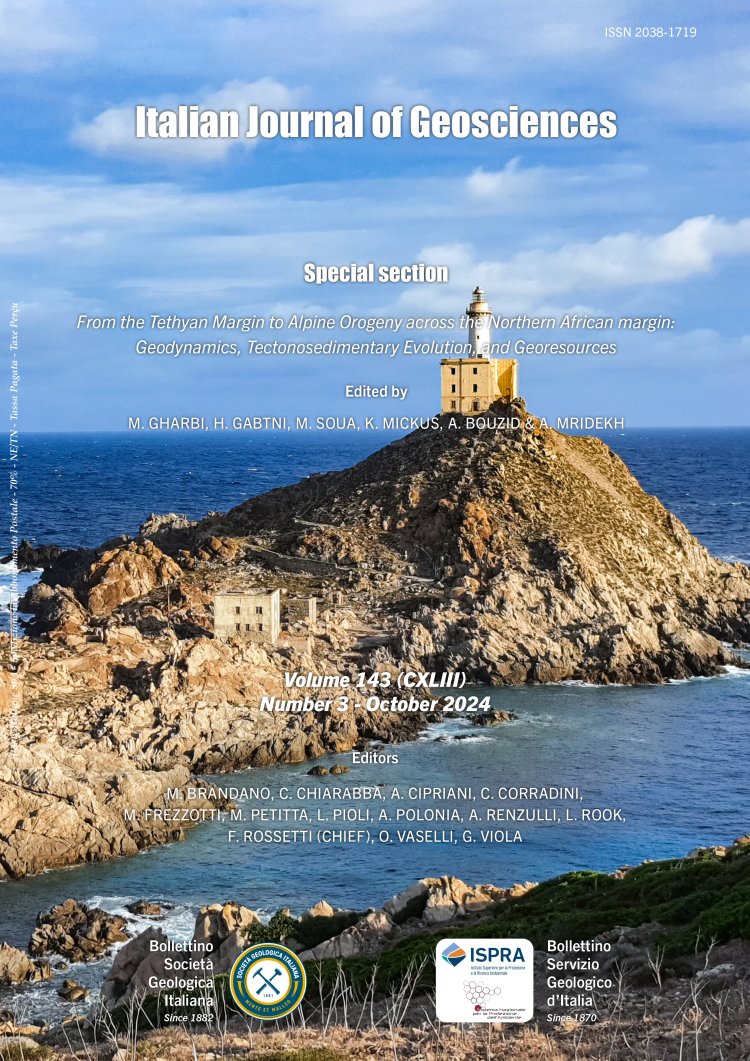
The role of inherited extensional faulting in the creation of Atlasic structures: the case study of the Semmama back-thrust anticline
Siwar Ben Elhoul1, Riadh Ahmadi1, Chaouki Khalfi1 & Philippe Robion2
1National Engineering School of Sfax (ENIS): Laboratory of Water, Energy and Environment (LR3E), Rte Soukra 4 km, 3000 Sfax, Tunisia.
2University of Cergy-Paris: Laboratory of Geosciences and Environment Cergy (GEC). 1, Rue de Descartes, Neuville-sur-oise-95000.
Corresponding author e-mail: riadh.ahmadi@enis.tn
Volume: 143 (2024) f.3
Pages: 331-344
Abstract
In this work, we integrated structural investigation, wells and seismic interpretation with analysis of magnetic anisotropy with the objective to reconstruct the kinematic evolution of the NE-SW trending Semmama anticline, located in the the central Tunisian Atlas province. Based on lithostratigraphic correlation, we observed a thickening of the Aptian-Albian levels towards the North compatible with a scenario of syn-tectonic sedimentation, as controlled by ESE-WNW striking normal faulting. The anisotropy of magnetic susceptibility (AMS) results displayed both normal and reverse fabrics for the sampled outcropping formations. To interpret the reverse magnetic fabrics, we performed Anisotropy of Anhysteretic Remanent Magnetization measurements to define their normal configuration. Both magnetic methods showed well-defined magnetic fabrics with NESW to N-S trending magnetic lineation that is consistent with the Early Cretaceous extensional phase. We then built a balanced cross-section, where we interpreted the Semmama anticline as a fault-propagation fold during backthrusting. The main detachment level is situated in the Triassic succession at the depth of 5.5 km and the fold has an estimated shortening of 2.2 km. We proposed that the ESW-WNE normal faults were reactivated during the Tertiary NW-SE compressional event forming the present day back-thrusting structure.
Keywords
Atlasic fold belt, Semmama anticline, anisotropy of magnetic susceptibility, balanced cross-section, fault propagation folding, inherited normal faults.
Get Full Text